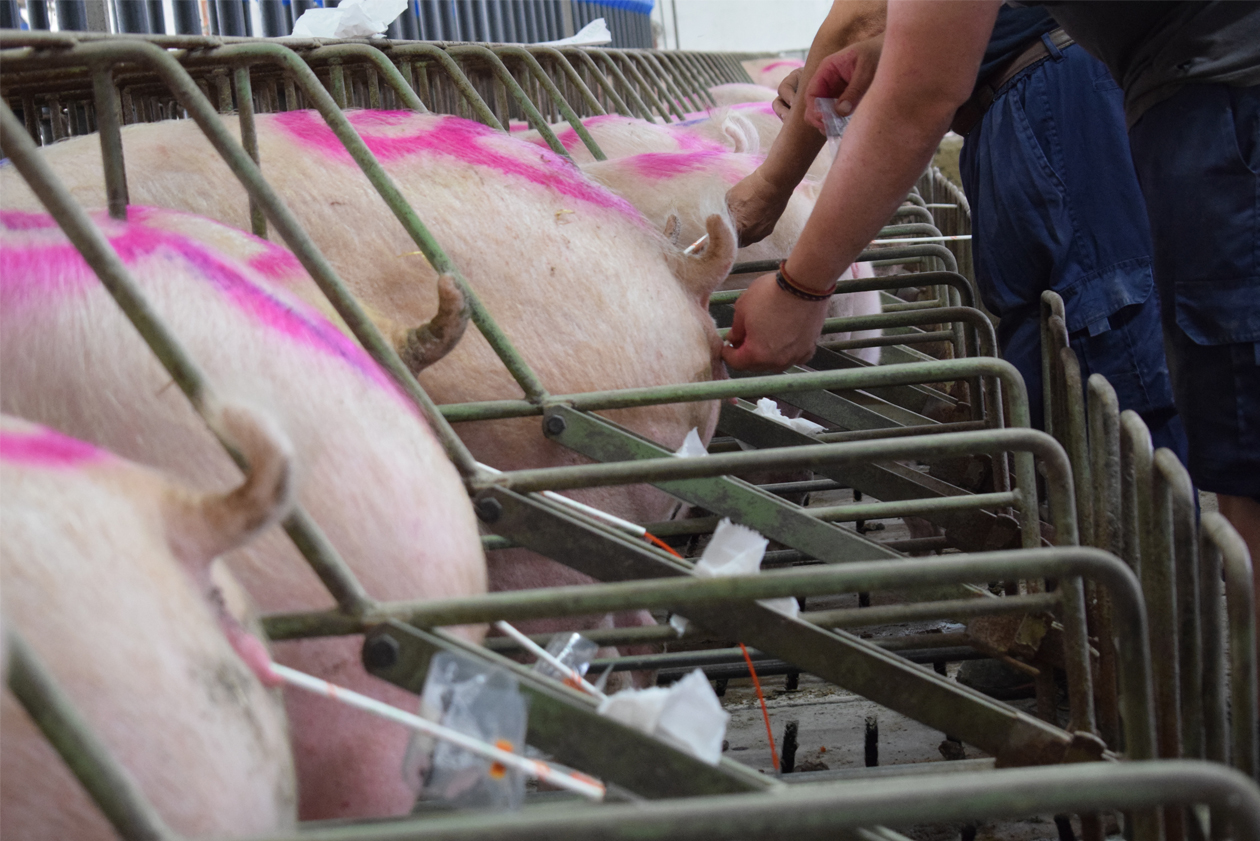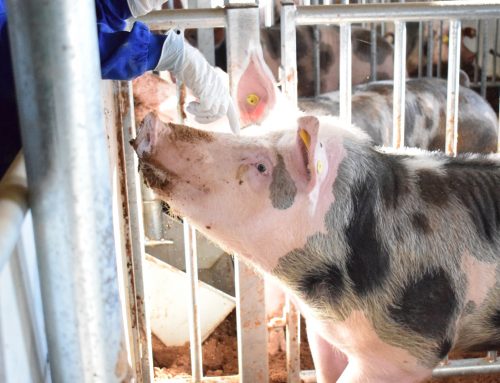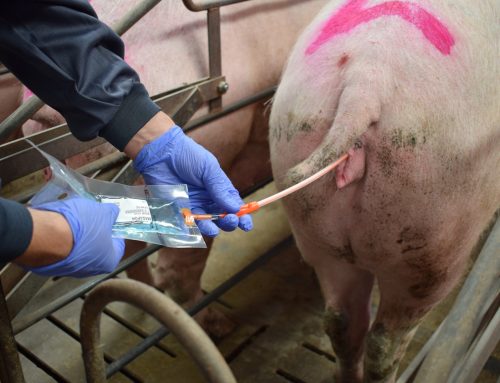In this blog post we will talk about the future of the farm, the gilts. As is well known, the gilts have a very important role within the farm since they represent the future of the farm, in addition if we divide the farm into subpopulations by age, we will realize that they usually represent the largest group (20-24% of the total).
Therefore, their reproductive results will have a great impact on the productive yield of the farm. To achieve the maximum performance of the gilts we must know what is the optimal time to carry out their first covering and therefore start their productive life, for this certain actions must be carried out that allow us to optimize their coming into heat.
We can divide these performances into two groups:
- Entry requirements of gilts into production.
- Handling practices carried out until insemination.
Both groups of actions will help us to maximize the reproductive performance of the breed in its first birth, which will mark the yield and the productive half-life of future breeders.
The age at which gilts reach puberty is between 200 and 215 days and will be influenced by various factors, such as genetics or the effect of the environment, and many others that depend on the management we carry out as exposure to the boar, number of previous heats and the weight reached before the first insemination, among others.
We have to keep in mind, that each provider of genetics has some recommendations, regarding age, nutrition, weight …, which will allow them to develop their full genetic potential. The points discussed below are therefore general ideas or concepts.
Requirements that we must ask the gilts before entering to production
Gilts age: The age at which puberty is reached is related to the litter size at the first birth and the elimination rate of gilts. Females usually arrive at the farm in a peripuberal period (160-170 days), being observed that the sows that present the heat in the next days to their arrival to farm have a greater possibility to remain for longer time producing in the farm. Sows shall reach puberty on the farm and shall be suitable for insemination within 210-240 days.
Weight at the first covering, this parameter goes hand in hand with age and like this, is strongly linked to genetics. The arrival of new genetics in which the high growth rate is not accompanied by sexual precocity and therefore in many sows there is a gap between age and weight, this must be taken into account. For this reason, each genetics has optimal weights to make the first covering, but usually it is around 130-150 kg.
The health status and morphological characteristics of the breedings should be “scanned” to the new sows once they arrive at the farm looking for an adequate conformation of the locomotive apparatus, absence of hernias or other visible pathologies and presence of 12-14 breasts. We can also look at the morphology of the vulva and if any of them have symptoms of heat. This vigilance should be carried out throughout the adaptation period.
Another criterion to be taken into account to carry out the first covering on the gilts is that it has gone through two or three previous heats. This recommendation is based on studies related to a greater length of vagina to cervix since it is correlated with uterine capacity in adult life and with prolificity. In addition, controlling heats will help us identify piglets that are not cycling correctly and remove them from the group.
We also talk about the management practices that we must carry out on gilts to optimize their coming into heat, reducing the arrival time until their subsequent covering.
Nutrition during this period is very important, because in order for these sows to express their full genetic potential we have to get a necessary growth, but without getting to grease too much, therefore it is recommended to use feed of higher quality and in the correct quantity during the adaptation period achieving growth levels equal to or greater than 600gr/day. Also comment on the beneficial effect observed from the use of flushing in the ration of the breedings the ten days prior to the first covering.
The facilities and the type of accommodation also have an effect on the reproductive development of the piglets, they must provide adequate lighting, about 250 lux for about 14-16 hours. The group accommodation, providing an adequate space per animal, about 1.8 m² per animal and non-abrasive floors to avoid problems of aplombs that will ballast productively future breeders. The number of breedings in group accommodation should be around 8-10 animals per park, allowing to express the natural behavior of the pigs.
Early stimulation with the presence of the boar, will help in two ways. The first is to locate possible sows that, as we mentioned before are reproductively inefficient. In addition, we can stimulate daily so that the gilts reach puberty as early as possible. Contact with the boar should be made daily on a timely basis, 10-15 minutes and not continuously since both insufficient and excessive contact can have results. The male effect occurs with a combination of sight, smell, sound and especially contact with the boar. The presence of a boar with good libido and at a correct frequency and time of exposure, will cause in the gilts a release of estrogens and LH, which, by positive feedback on the hypothalamus (GnRH), will end in an increase in the release of gonadotropins. With this early induction of heat, it will allow us to obtain cyclical heat as soon as possible and we will also be able to identify those sows with better reproductive potential.
To conclude, briefly to comment that, during the quarantine period, the gilt will adapt to the microbism of the farm, so it is also very important to carry out a correct and appropriate vaccination plan for the farm. Note that we should never inseminate gilts that have been recently vaccinated nor those that have not had a correct adaptation period. We will already obtain reproductive results below what we expected and we will weigh the productive life of the breeder with a bad start.
Once the quarantine period is over and the gilt is going to be inseminated for the first time, it is important, as we have mentioned in other blog posts, to carry out a correct technique of suspicion and insemination. It should be noted that gilts are characterized by having a somewhat shorter heat duration (48-50 hours) than the multiparous. The time of ovulation being close to 30-35 hours, although this duration is influenced by different factors such as genetics, management or time of year. These two aspects will mark the insemination protocol carried out on the farm.
With this post we intend to give a few brushstrokes in terms of advice when adapting the breeders to the farm and how to optimize its coming into heat so that these animals start their productive stage correctly.
In the next blog post, we will talk about the different types of catheters and probes for traditional and post-cervical insemination and the differences and characteristics of each one.
See you soon!
BIBLIOGRAPHY
Quiles, A., Hevia, M.L. Manejo y preparación de las cerdas nulíparas (1ª parte). Producción Animal (2007) 231: 4-11
Quiles, A., Hevia, M.L. Manejo y preparación de las cerdas nulíparas (2ª parte). Producción Animal (2007) 232: 4-11
Kaneko, M. Koketsu, Y. Gilt development and mating in comercial swine herds with vaying reproductive performance. Theriogenology (2012) 77: 840-846
https://www.3tres3.com/guia333/empresas/ceva-salud-animal-sa/posts/4630



